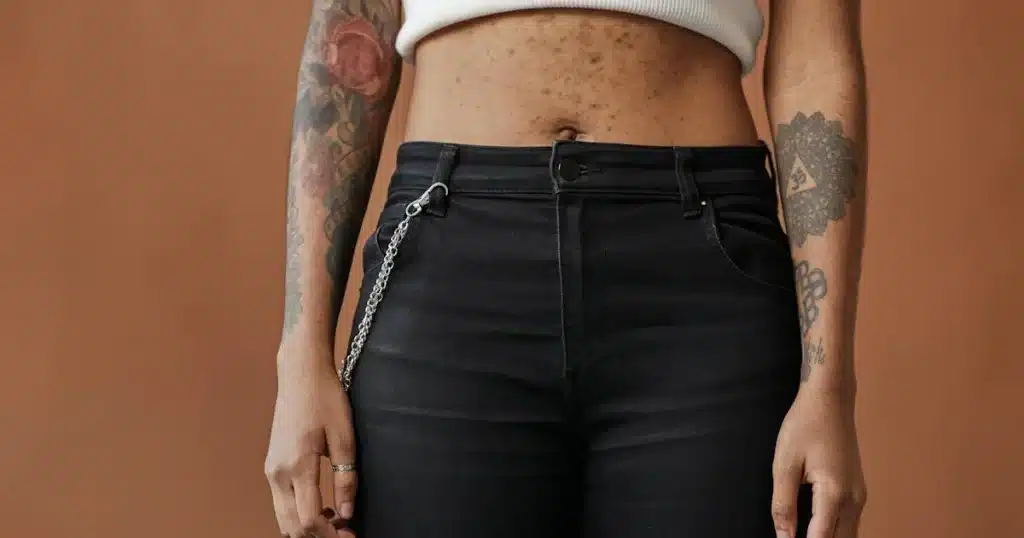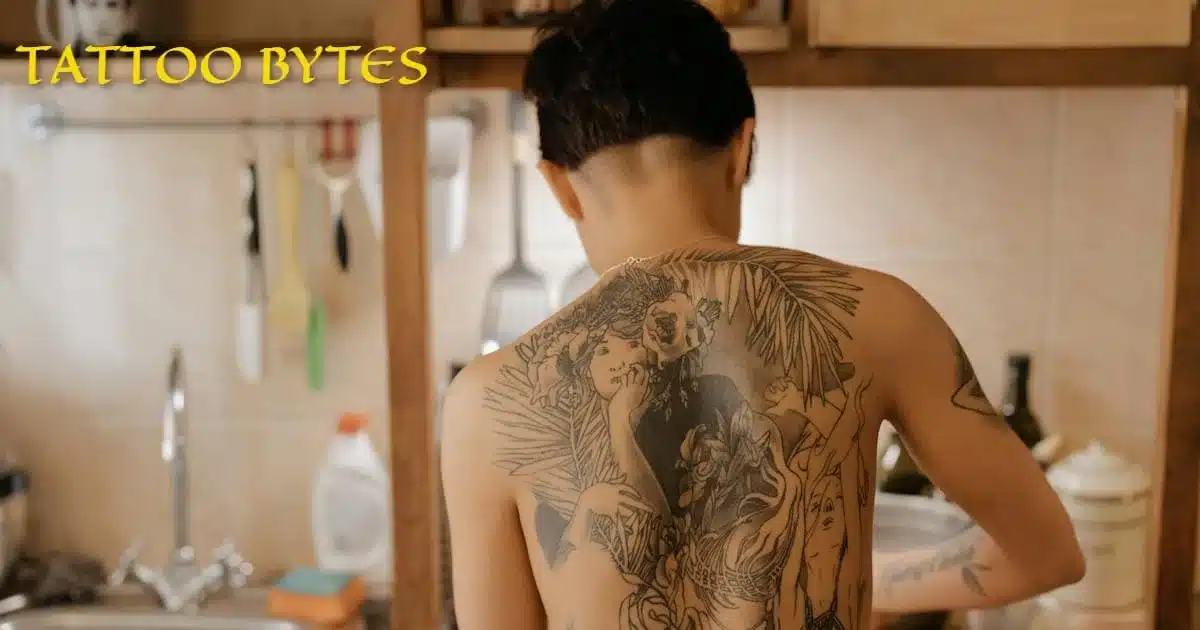Getting a new tattoo is an exciting experience. But once the initial thrill wears off, the waiting begins. Now you’re eager to see your new ink healed and looking its absolute best. So how long does it actually take for a tattoo to heal?
The tattoo healing process happens in stages. It can take 2-6 weeks for a tattoo to fully heal. During that time, your tattoo will go through many changes before it reaches its final healed state.
Below we’ll explore the stages of tattoo healing and what to expect during each phase. We’ll also provide tips on how to care for your new tattoo to ensure proper healing.
What Happens During the Tattoo Healing Process?

Tattoo healing happens in 3 main stages:
Initial Stage (Days 1-6)
- The first stage starts as soon as your tattoo is done.
- During this time the tattoo is an open wound and highly vulnerable to infection.
- Typical characteristics of this stage:
- Swollen, Red, Sore, and Irritated Skin – This is normal and indicates your body’s inflammatory response as it starts healing the damaged skin.
- Plasma or Ink Leakage – Plasma, ink, and blood leaks from the tattoo. It dries and forms scabs to protect the tattoo.
- Itchy Sensation – Itching is common as the skin begins to heal. Resist scratching as it can pull off scabs.
Peeling Stage (Days 2-3 Weeks)
- Next the tattoo moves into the peeling phase.
- Scabs will begin to lift off and reveal new skin underneath.
- Signs of the peeling stage:
- Flaking Skin – The outermost layer of damaged skin will start to flake off. Let it fall off naturally.
- Itchy Sensation – Itching increases as the healing skin gets drier and starts peeling.
Final Healing Stage (3-6 Weeks)
- Last the tattoo finishes healing the damaged skin.
- At this point your tattoo will look nearly complete. Just don’t be alarmed if it looks a bit cloudy.
- What to expect during the final healing stage:
- Less Irritation – Redness, swelling, and tenderness continue to decrease.
- Cloudy Appearance – Your tattoo may look a bit dull and cloudy. This is normal and clears up over time.
- Final Touch-ups – After 4-6 weeks, your tattoo artist will assess if any touch-ups are needed.
Tattoo Healing Timeline
Now let’s take a closer look at the tattoo healing stages and timeline day-by-day:
Day 1
Your new tattoo is bandaged to protect it for the first 24 hours. Keep the bandage on overnight and avoid getting it wet. The tattoo may ooze plasma, ink, and blood under the bandage which is normal.
Days 2-6
After removing the bandage, gently clean your tattoo 1-2 times per day. Apply a thin layer of fragrance-free moisturizing cream. The tattoo will be swollen, sore, and slightly red. Do not re-bandage or soak the tattoo. Scabs will start to form over the ink.
Days 7-13
In the second week, scabs become thicker. Resist the urge to pick them prematurely. Dry skin and itching are common. Moisturize the tattoo 1-2 times a day after cleaning. Avoid sun exposure.
Weeks 2-3
During weeks 2-3, the scabs will begin to flake off, revealing the healed tattoo underneath. Don’t pick at scabs and let them come off naturally. The outer layer of skin will peel away as the tattoo continues healing.
Weeks 4-6
In the final weeks, your tattoo will complete the healing process. Irritation and cloudiness should resolve. The tattoo may need minor touch-ups from your artist at this point. Use sunscreen when going outside.
What Factors Affect Tattoo Healing Time?

The standard healing timeline is 2-6 weeks, but many factors can affect your individual healing ability:
- Tattoo Size – Small tattoos heal faster than large intricate designs. Sleeves and big pieces take the longest.
- Tattoo Location – Areas with thick skin (shoulders, back) heal better than thin skin (feet, fingers). High friction areas take longer.
- Your Age and Health – Younger healthy people’s immune systems can heal tattoos quicker. Medical conditions can prolong healing.
- Medications – Certain medications like blood thinners and steroids may interfere with healing.
- Your Artist’s Skill – A talented artist will create a tattoo with less trauma and damage, leading to quicker healing.
- How You Care for It – Proper aftercare is key! Follow your tattoo artist’s instructions for cleaning and moisturizing.
- Skin Type – Dry or sensitive skin is more prone to irritation and may heal slower.
So be patient! Your unique circumstances will determine how long it takes for your new tattoo to heal. Listen to your artist’s advice and properly care for your tattoo to ensure successful healing.
Tattoo Aftercare Tips
Caring for your new tattoo is crucial during the healing process. Follow these tips to allow proper healing and keep your tattoo looking vibrant:
- Remove bandages gently after 24 hours, wash tattoo lightly with antimicrobial soap, and pat dry with a clean paper towel. Apply a thin layer of fragrance-free moisturizing cream.
- Clean tattoo 2-3 times per day with mild soap and water. Gently wash off ointment, plasma, ink, and peelings. Rinse thoroughly and pat dry with clean paper towels.
- Apply a rice grain sized amount of moisturizing cream or ointment after cleaning. Too much can suffocate and damage healing skin.
- Avoid direct sun exposure which can cause fading, and irritate healing skin. Use SPF 30 sunscreen after tattoo is fully healed.
- Do not immerse your tattoo in water like baths, pools, hot tubs until fully healed. Avoid long hot showers.
- Do not pick scabs or scratch your tattoo. Let them naturally flake off over time. Scratching can pull color out of the tattoo.
- Wear clean, breathable clothing over the tattoo while healing. Tight clothing can stick to scabs and pull them off early.
- Avoid applying makeup, tanning lotions, or skin exfoliants until tattoo is fully healed.
- Usage of petroleum, Neosporin, or hydrogen peroxide can damage healing skin and pull color from the tattoo.
Follow your artist’s recommendations, and if any signs of infection arise such as excessive redness, swelling, pus, see a doctor immediately.
Signs of Tattoo Infection and What To Do

Infections can impede the tattoo healing process. Contact your doctor if you experience:
- Excessive Redness – Redness spreading around the tattoo or is still severe after 2-3 weeks.
- Swelling – Significant swelling that continues to get worse.
- Pus – Yellow/green fluid oozing from the tattoo. This is a sign of pus which indicates infection.
- Warm to the Touch – Feels excessively warm when you touch it.
- Fever – An infection can sometimes trigger an elevated body temperature.
- Pain – Severe constant pain and tenderness at the tattoo site.
- Rash – Rash-like appearance around the tattoo. Could indicate an allergic reaction.
- Odor – Strong, unpleasant odor coming from the tattoo.
See a healthcare provider immediately if these symptoms arise. Infections must be properly treated with antibiotics to prevent complications like abscesses, blood poisoning, or severe scarring.
Conclusion
The tattoo healing process is a careful balance between letting your skin heal naturally and providing the right care to facilitate proper healing. It takes an average of 2-6 weeks for a tattoo to fully heal, but many factors can affect your individual healing timeline – from your age and health, to the tattoo’s size and location on your body.
During the healing stages, it’s crucial to follow your artist’s aftercare instructions to keep the tattoo clean, hydrated, and protected. Watch for signs of infection and contact your doctor if any severe symptoms arise. Resist the urge to pick scabs or soak the tattoo before it has fully sealed up.
With proper care and patience, your tattoo will transform from a fresh open wound to a permanent work of art. The healing process is a natural collaboration between your body’s immune response and your attentive aftercare. If you give your new tattoo the time and care needed in those critical first weeks, you’ll be rewarded with stunning results – vibrant colors, crisp lines, and a flawless display of your chosen design.
FAQs About Tattoo Healing
How long should I keep my new tattoo bandaged?
Keep the bandage on for the first 24 hours. After that, gently wash the tattoo and leave it uncovered. Covering it too long raises infection risks by creating a moist environment for bacteria.
When can I stop cleaning and moisturizing my new tattoo?
Clean and apply ointment or cream 2-3 times per day until the skin has fully healed, typically 3-4 weeks. Over time you’ll need to moisturize less frequently.
How long before I can go swimming or take a bath after getting tattooed?
Avoid submerging your tattoo in water until it has fully healed. Generally wait 3-6 weeks before baths, swimming, or hot tubs. The warm moist environment can draw out ink and introduce bacteria.
When can I expose my new tattoo to the sun?
Keep your tattoo completely out of the sun and use proper sunscreens once fully healed. The sun can fade ink, especially in the first few months when the color is stabilizing.
